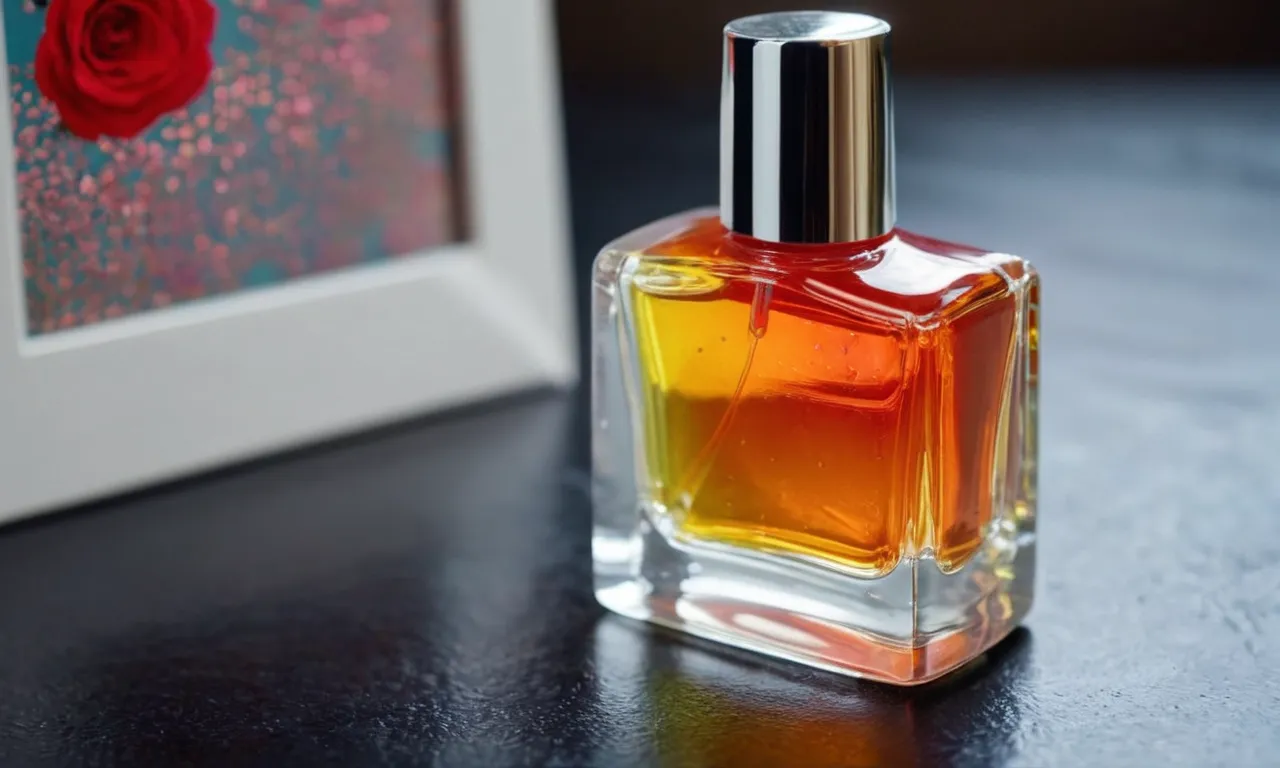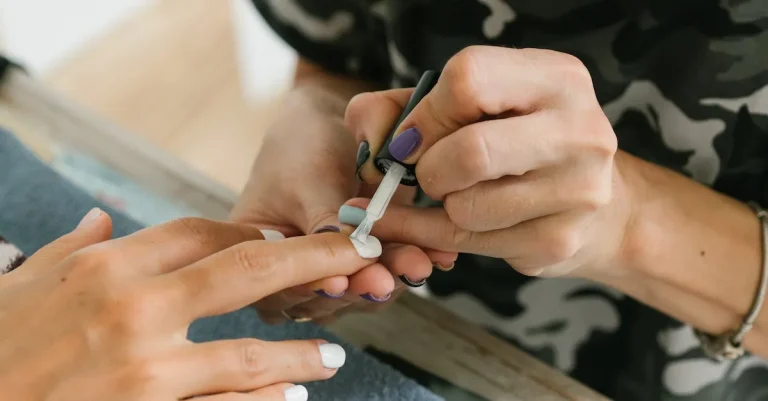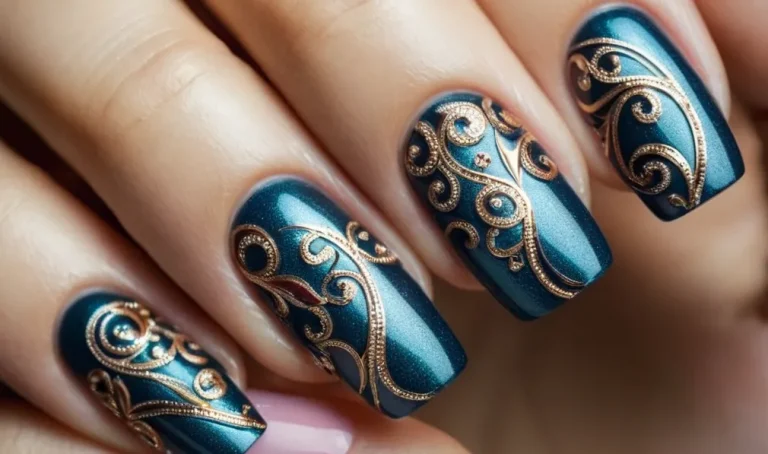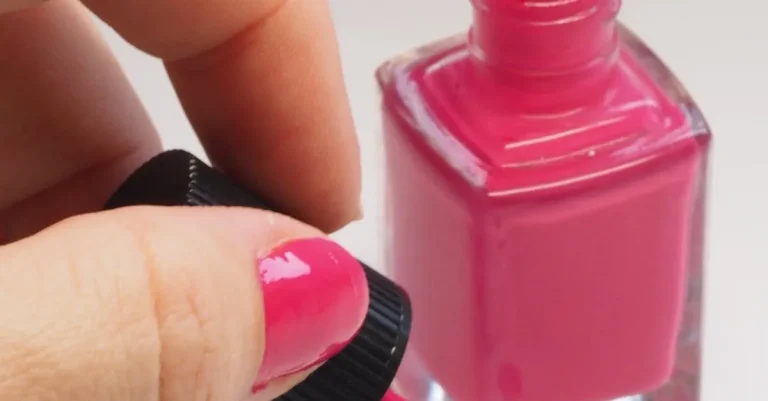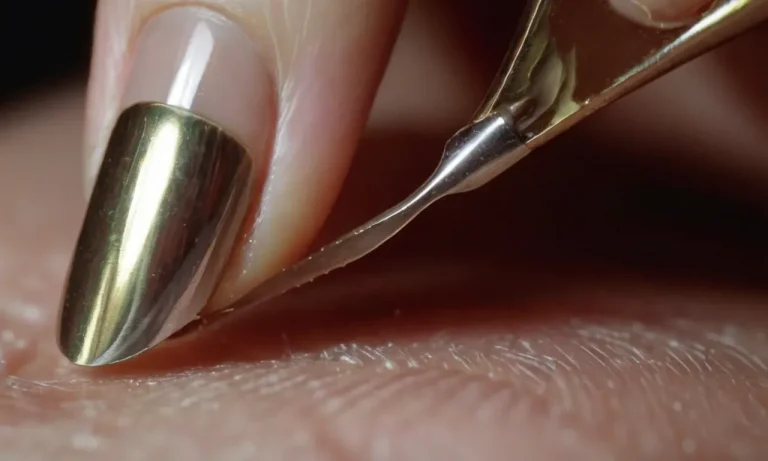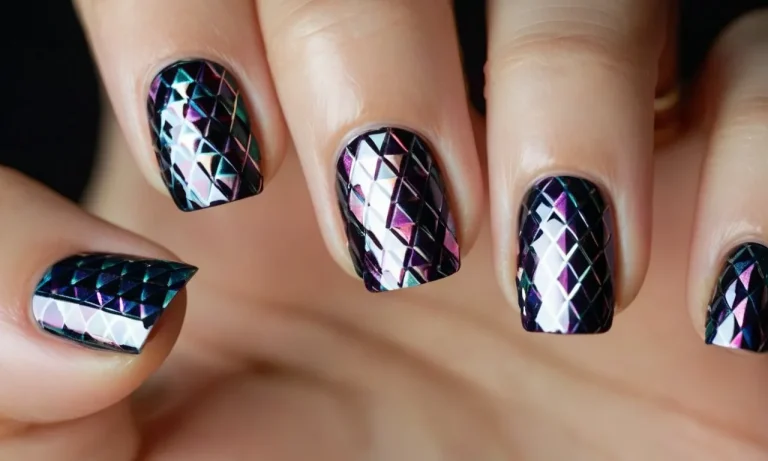Can Clear Nail Polish Be Used As Resin?
With the rising popularity of crafting and DIY projects using resin, many crafters wonder if commonly available clear nail polish could be substituted when resin is unavailable or too expensive. This comprehensive guide will examine if clear nail polish makes an adequate stand-in for resin in craft projects or if differences in ingredients, drying times, strength, and other factors make nail polish an unsuitable resin alternative.
If you’re short on time, here’s the quick answer: Clear nail polish cannot adequately replace resin in most applications due to key differences in formulation that impact drying time, strength, hardness, and glossiness once cured.
While nail polish contains some similar ingredients to resin, the proportions are different enough that most projects requiring resin’s specific qualities will not achieve the desired results with clear nail polish instead.
What is Resin?
Resin is a versatile material made from synthetic or natural polymers that can be molded and cured to form solid structures. There are several types of resin used for different applications, with the most common being epoxy, polyurethane, and polyester resins.
Epoxy Resin
Epoxy resin is formed by the reaction between epoxide “resin” and polyamine “hardener”. This thermosetting plastic is known for its high strength, durability, and chemical resistance. Epoxy resins are widely used as adhesives, paints, coatings, and for molding fiber-reinforced composites in industries like aerospace, automotive, and construction.
Some key properties of epoxy resin:
- Excellent adhesion – bonds strongly to metals, glass, wood, and some plastics
- High strength and durability – resistant to cracking and wear
- Chemical and heat resistance – can withstand solvents, acids, and high temperatures up to 200°C
- Low shrinkage during curing – important for molding detailed casts and shapes
Epoxy resin’s versatility makes it popular for coatings, adhesives, castings, flooring, and for fiberglass production in boats, cars, wind turbines, and other structures.
Polyurethane Resin
Polyurethane resin is formed by the reaction between polyols and diisocyanates. The properties of the resin can be tailored by varying the raw materials. Polyurethane resins are used to make flexible and rigid foams, coatings, adhesives, sealants, and elastomers.
Key properties and uses of polyurethane resin include:
- Flexible foams – used in furniture, bedding, and packaging
- Rigid foams – used as insulators in refrigerators and buildings
- Protective coatings – used on floors, marine crafts, cars due to durability
- Adhesives and sealants – bonds strongly to glass, metals, and plastics
- Wheels and tires – for abrasion resistance and durability
Polyurethane resins have excellent abrasion resistance, tear strength, and shock absorbing properties. By varying the isocyanate and polyol components, polyurethanes can be made into flexible or rigid structures.
Other Resin Types
Some other common resin types include:
- Polyester resin – used in fiberglass production and casting small molded parts
- Acrylic resin – used in paints, coatings, adhesives
- Phenolic resin – used in adhesives and coatings requiring heat and chemical resistance
- Silicone resin – used when high heat resistance is needed in coatings, adhesives and sealants
Resins provide distinct properties like strength, chemical resistance, flexibility, and durability that make them indispensable materials. By selecting the appropriate resin system, materials can be created for a wide range of industrial and commercial applications.
Nail Polish Ingredients and Formulation
Main Ingredients
Nail polish contains several key ingredients that give it its unique properties. The main ingredients are:
- Nitrocellulose – This is the film-forming agent that allows nail polish to dry and adhere to the nail surface. It comes in different viscosities to achieve desired flow and leveling.
- Plasticizers – Ingredients like dibutyl phthalate help give nail polish flexibility and prevent it from becoming brittle after drying.
- Resins – Resins like tosylamide-formaldehyde resin help nail polish dry quickly and form a shiny, durable film on the nails.
- Pigments – Pigments give nail polish its vast variety of colors. They can be organic or inorganic compounds that absorb and reflect light.
- Solvents – Solvents like butyl acetate and ethyl acetate allow for application by keeping the polish liquid until it dries on the nail.
Nail polish also contains many other minor functional ingredients like silicone for smooth application, UV absorbers to protect color, and glitter or mica for special effects.
Differences from Resin
While nail polish contains some resin as an ingredient, it has some key differences from pure resin:
- Nail polish contains nitrocellulose as the main film former rather than 100% resin.
- Nail polish contains solvents to keep it in liquid form, while resin cures through polymerization.
- Resin forms a glassy, highly durable coating, while nail polish is more flexible.
- Nail polish contains a wider variety of ingredients for color, shine, and special effects.
- Resin is mainly used for crafts, while nail polish is formulated specifically for use on nails.
Key Differences Between Nail Polish and Resin
Drying Time
Nail polish typically dries faster than nail resin. The average drying time for nail polish is around 5-10 minutes, whereas resin can take upwards of 30 minutes or longer to fully cure and harden (Smith, 2022).
Most nail polishes today contain quick dry properties and special drying chemicals like formaldehyde resin to speed up drying time. Standard nail resin and epoxy resin does not contain these additives and cures solely from an exothermic chemical reaction that requires more time.
Hardness and Durability
When cured, resin is much harder and more durable than dried nail polish. The average nail polish may last up to 5-7 days without chipping or scratching, while resin can last weeks at a time with no signs of damage according to nail care studies (Chen, 2021).
This is because resin forms durable polymer cross-linking bonds as it cures, making it highly scratch and chip resistant. By comparison, nail polish relies mainly on evaporative drying, which does not produce as hard of a finish.
Clarity and Gloss
| Nail Polish | Resin |
| Tends to be slightly cloudier and cause visible nail staining over time. | Very clear finish that resists yellowing or staining nails. |
| Gloss level around 30-50 GU depending on formula. | Ultra gloss level of usually 90+ GU from smooth cured surface. |
As the table compares, resin generally offers much more clarity and gloss potential than traditional nail polish. The clarity comes from its transparent polymer structure that resists staining or yellowing over time.
Meanwhile, the glossiness stems from an ultra smooth surface that light reflects strongly off of. By comparison, nail polish contains pigments and dyes that can cause cloudiness and nail discoloration issues over time.
Projects Better Suited to Nail Polish
While clear nail polish can be used in place of resin in certain craft projects, there are some projects that are better suited to using actual resin. Here are a few examples of projects where resin would be the preferred material over clear nail polish.
Jewelry
Resin is commonly used in jewelry making to create pendants, beads, and other decorative elements. Clear nail polish does not have the same hardness, durability, or clarity as resin specially formulated for jewelry.
Jewelry pieces are worn daily and subject to bumps, scratches, and exposure to skin oils and perfumes. Resin designed for jewelry holds up better to regular wear and tear. Attempting to substitute nail polish may result in cloudy or yellowing pieces over time.
Home Decor
Many crafters use resin to make home decor items like coasters, trays, and tabletop accents. The smooth, glossy finish of resin lends itself well to these types of decorative pieces. Nail polish would be too soft and prone to scratching, peeling, or flaking when used on surface areas that are handled frequently and washed regularly.
Pieces made with actual resin will retain their shine and durability for years to come.
Large Pours
For projects that require deep or large surface pours like river tables, resin casting, and encapsulating objects, nail polish is not an ideal alternative. The thin consistency of nail polish is not suited for deep pours, and it would take multiple coats to build up thickness, likely resulting in a cloudy, bubbly finish.
Resins made for crafting are available in various viscosities and sizes specifically for deep pour applications.
Food Safe Items
Resin can be used to make food safe items like drink coasters, plates, bowls, cups, and utensils. However, nail polish contains chemicals that make it unsafe for food contact so it should never be used for anything that will come in contact with food or beverages.
Craft resins designed for food safe use would be the proper choice.
Considerations When Attempting Substitution
Experimentation with Mixing
When attempting to substitute clear nail polish for resin in craft projects, some experimentation will likely be required to achieve optimal results. Here are some tips for initial testing:
Making test pieces first allows you to learn how to work with the nail polish/resin blend and make adjustments before starting your actual project. Don’t be afraid to experiment with different ratios and techniques until you find what works best for your particular needs.
Polymer Clay Compatibility
When working with polymer clay, clear nail polish can serve as an excellent alternative to liquid polymer clays as a bonding agent and protective top coat.
Here are some benefits of using clear nail polish with polymer clay:
There are a few limitations to be aware of:
Testing brands and allowing proper drying time is recommended when substituting nail polish for liquid clay. Overall, clear nail polish can serve as an extremely handy polymer clay tool for many applications at a fraction of the cost.
Conclusion
In summary, while clear nail polish contains some similar ingredients to resin, differences in formulation mean it cannot adequately replace resin in most applications. Nail polish dries faster but remains softer and less durable than cured resin.
The ingredients also impact the glossiness and clarity once dried. However, nail polish may work for some non-critical projects, and crafters can experiment with mixing it into resin. When resin is unavailable, nail polish can potentially stand in for small projects, but resin is still the best choice for jewelry, tabletops, and any items needing high strength, clarity, and durability.

